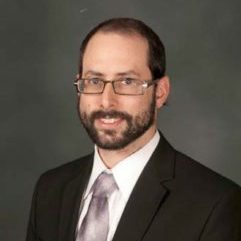“The blossoms have appeared in the land; the time of singing has arrived and the call of the turtledove is heard in our land.” (Song of Songs 2:12)
The TurtleDove (Streptopelia turtur) gets her name from her distinctive, purring, gentle and evocative TurTur sound as she brings in the summer months. It is a farewell to winter and a wake up call to new and better times to come.
These sounds are heard throughout the land, but they are directed at us. Hachodesh Hazeh Lachem – this month is for you – G-d says, because it is our chance for renewal. As we welcome Parshas Hachodesh, we witness the rebirth of the moon and experience the refreshing vistas of springtime. We relate to this reality by preparing for Pesach, the Seder, and the anniversary of the day that we were taken by Hashem to be his nation (R S.R. Hirsch, The Jewish Year).
The answer lies in the table of contents that we sing at the Seder. According to the Kabbalists, we name each step of the seder because it represents a spiritual undercurrent. The seder is not just a mimicry of the Greek symposium; it is a yearly process of freedom, liberation and closeness to G-d.
We begin the Seder with Kadesh Urchatz: we sanctify ourselves and wash our hands. Common sense would dictate that we wash our hands as a first step in sanctification, but the Hagada tells us otherwise.We sanctify first and wash our hands second.
One of the early Chasidishe rebbes, “The Shpoyler Zaide” (of Dancing Bear fame) once sat down at his Seder and invited his youngest child to recite the Simanim. The youth said. “Kadesh – the father comes home from shul puts on his kittel and makes kiddush”. He stopped. The Zaide asked, “is that it!?” “yes”, the boy replied “that’s all my teacher taught me”. Early the next morning the Zaide approached the teacher in shul: “is it true that you taught the children an abridged version of the text”?! The teacher explained that since the children were young it he felt was enough just to teach them the bare bones of things. The rebbe scolded the teacher: “don’t you realize that everything in the Seder has special significance? Kiddush isn’t just a blessing on wine, it means holiness and sanctification. The father we refer to is Hashem. On the first night of Pesach Hashem comes home from shul with us (so to speak). He is hoping to purify and redeem us as He did thousands of years ago on this day. It is in this hope we ask that the father (Hashem) “put on his kittel” and make kiddush (i.e. make us holy) very quickly. The reason for the rush is because us Jews are like little kids with a very short attention span. For hundreds of years Jews have been begging Hashem: “Make Kiddush quickly before your little children fall asleep. Never leave those words out again!”
Logically we should first wash our hands and then become holy. However, on Pesach (in Egypt and today) we are like Hashem’s small children. We really can’t be expected to wash our hands on our own and we need a little help from Hashem. It is not we who are sanctifying ourselves at the seder, but G-d who is sanctifying us. Every Pesach (and, on smaller scale, every shabbos) we receive a gift of free sanctification from Hashem. Sometimes that holiness is allowed dissipate and get lost, but if we are alert we can ride that holiness and follow it with our own purification, making it last forever.
At the end of the Torah we compare Hashem to an eagle that awakens his young by hovering above them. The Vilna Gaon explains the eagle flies higher than all other birds and carries her young on her back to protect them from any harm. In order to travel safely the birds need to be awake and holding on tight. In the same way, Hashem wakes us up, but it is our responsibility to stay awake and hold on tight.
It is Nissan. Spring is here. The time of singing has arrived and the turtledove is calling.
Wake Up!

0 Comments